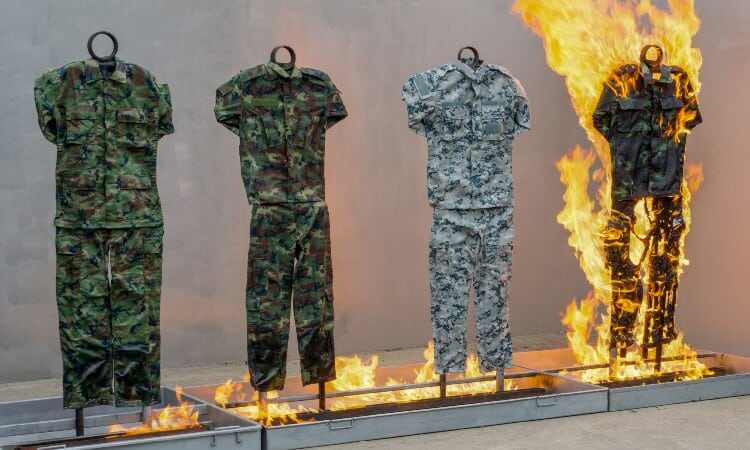
Fire retardant fabrics are engineered to resist ignition and slow down the spread of flames, offering critical protection in various high-risk environments. These fabrics are essential in industries such as firefighting, aerospace, and manufacturing, as well as in everyday applications like curtains and clothing. This article provides an overview of fire retardant fabrics, their types, applications, and key considerations for selecting and maintaining them.
Types of Fire Retardant Fabrics
-
Inherent Fire Retardant Fabrics
-
Description: Inherent fire retardant fabrics are made from fibers that are naturally resistant to flames. These fibers have built-in flame-resistant properties that do not wash out or degrade over time.
-
Examples: Aramid fibers (such as Kevlar and Nomex), PBI (Polybenzimidazole), and some high-performance polyester blends.
-
Applications: Commonly used in firefighter gear, industrial workwear, and military uniforms.
-
Chemical Treated Fire Retardant Fabrics
-
Description: These fabrics are made from fibers that are treated with chemical flame retardants during the manufacturing process. The treatment helps the fabric resist ignition and slow the spread of flames.
-
Examples: Cotton or polyester fabrics treated with flame retardant chemicals like phosphates, brominated compounds, or nitrogen-based compounds.
-
Applications: Used in protective clothing, upholstery, and curtains.
-
Flame Retardant Coatings
-
Description: Fabrics can also be coated with flame retardant chemicals to enhance their resistance to fire. The coating provides a protective layer that helps to delay ignition and reduce flame spread.
-
Examples: Coatings made from materials like silicone, polyurethane, or other polymer-based compounds.
-
Applications: Applied to a wide range of textiles, including industrial and commercial fabrics, as well as home furnishings.

Applications of Fire Retardant Fabrics
-
Protective Clothing
-
Firefighters' Gear: Fire retardant fabrics are critical in firefighting gear, including suits, gloves, and boots, to protect against extreme heat and flames.
-
Industrial Workwear: Workers in high-risk environments, such as those in metalworking or oil and gas industries, use flame-resistant clothing to safeguard against accidental burns and flash fires.
-
Aerospace and Military
-
Flight Suits: Pilots and astronauts wear fire retardant fabrics in their flight suits to protect against potential fires and extreme temperatures.
-
Military Uniforms: Flame-resistant fabrics are used in military uniforms to provide protection in combat situations where exposure to fire and explosive hazards is possible.
-
Home Furnishings
-
Curtains and Upholstery: Fire retardant fabrics are used in home furnishings, such as curtains and furniture, to enhance fire safety in residential settings.
-
Mattresses and Bedding: Some bedding and mattress materials are treated to reduce the risk of ignition and slow down the spread of flames.
-
Industrial Applications
-
Insulation and Barriers: Fire retardant fabrics are used in insulation materials and fire barriers to protect structures and machinery from heat and flames.
-
Tarps and Covers: Industrial tarps and covers made from fire retardant fabrics are used to protect equipment and materials from fire hazards.
Key Considerations for Selecting Fire Retardant Fabrics
-
Compliance with Standards: Ensure the fabric meets relevant safety standards and certifications, such as NFPA (National Fire Protection Association) or ISO (International Organization for Standardization) standards.
-
Durability: Evaluate the durability of the fabric, including its resistance to wear and tear, laundering, and chemical exposure.
-
Comfort and Fit: Consider the comfort and fit of the fabric, especially for protective clothing, to ensure ease of movement and extended wearability.
-
Maintenance: Follow the manufacturer's guidelines for cleaning and maintaining fire retardant fabrics to ensure their continued effectiveness.
Maintenance and Care
-
Cleaning: Follow specific cleaning instructions to avoid degrading the flame-resistant properties. Some fabrics may require specialized cleaning methods or detergents.
-
Inspection: Regularly inspect fire retardant fabrics for signs of damage, wear, or loss of effectiveness. Replace any damaged or worn items to ensure continued protection.
-
Storage: Store fire retardant fabrics in a clean, dry place, away from chemicals and extreme temperatures that could affect their performance.

Fire retardant fabrics play a crucial role in protecting lives and property from fire hazards. By understanding the different types of fire retardant fabrics, their applications, and the factors to consider when selecting and maintaining them, you can ensure effective protection in a wide range of environments. Whether for personal safety, industrial use, or home furnishings, choosing the right fire retardant fabric is essential for enhancing fire safety and minimizing risks.
-----------------------------------------------------
Shenzhen Xingyuan Safety Technology Co.,Ltd
Address:
1.A-4D Huibin Building Nanshan District Shenzhen Huibin Building China
2. 33-6 Huanchang North Road 8. Changping Donguan China
3. 2 Floor, Building 6, No.38 Longteng Avenue, Yubei District, Chongqing China




